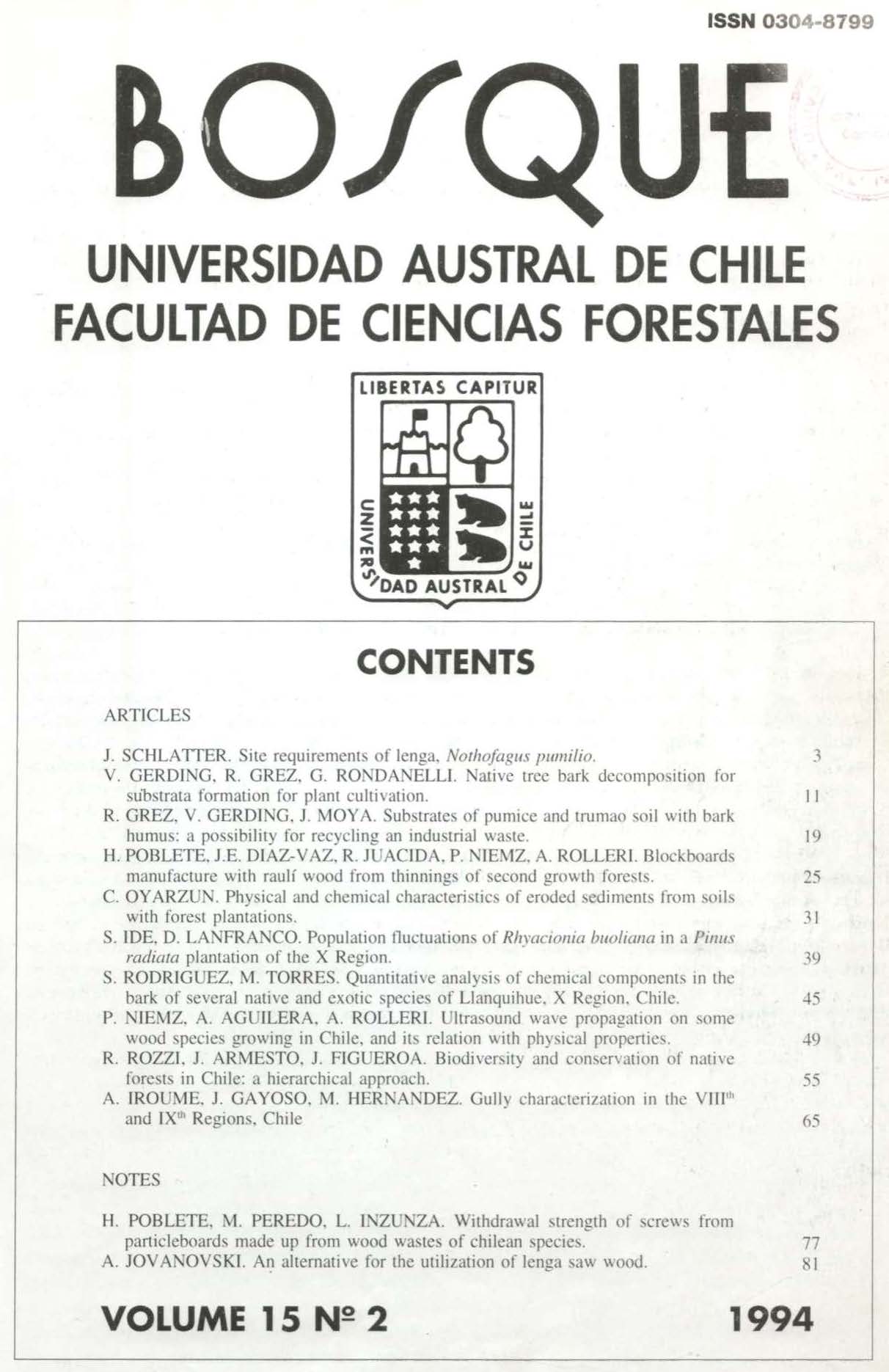Biodiversity and conservation of native forests in Chile: A hierarchical approach
Main Article Content
Abstract
The degree of knowledge and conservation status of Chilean temperate forest is evaluated considering three attributes of biodiversity (Noss, 1990): composition (list of elements), structure (spatial pattern) and function (ecological and evolutionary processes), and four levels of biological organization: genetic, population-species, community-ecosystem and landscape. The utility of the Chilean National System of Protected Areas (SNASPE) and of the forestry law, presently under discussion in the Chilean Congress, is also discussed.
Three critical aspects are perceived in relation to SNASPE: (1) the size of most reserve is too small to sustain viable populations of the largest vertebrates; (2) most of the protected forests are located outside the region of highest endemism and species richness; (3) land adjacent to the protected areas is not subjected to any form of land-use control or regulation. On the other hand, in the prospective forestry law, forests are defined solely on the basis of tree species composition and cover. It is proposed that, in order to be an effective tool to sustainable management and conservation of native forests, this definition needs to integrate the different atributes of biodiversity and levels of organizations. The final discussion is about how ecology can contribute to promote a cultural change that may lead to a new relationship between human society and nature.

